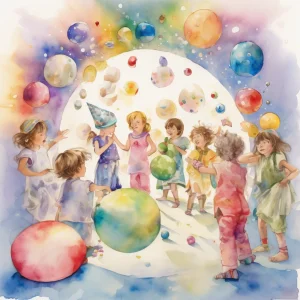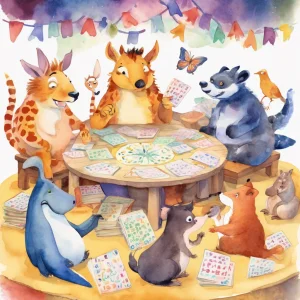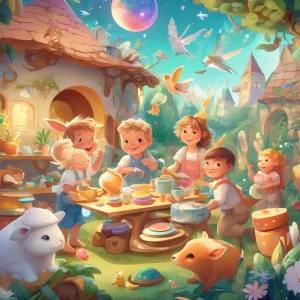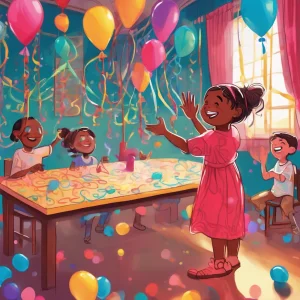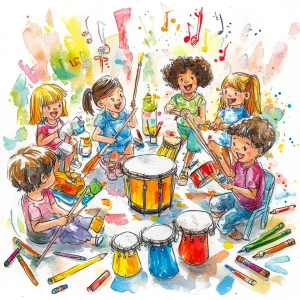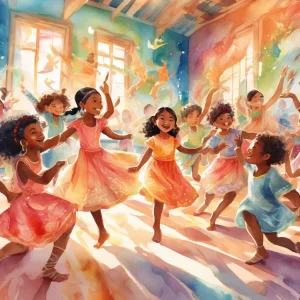Activity
Similar Activities
Imaginary Adventures: Mini Bowling Feelings Story Game
Children’s Age: 2–5 years
Activity Duration: 10 minutes
An engaging activity promoting sensory development, creativity, reading, and storytelling.
Activity Duration: 10 minutes
Magical Math Journey: Sensory Math Storytime Adventure
Children’s Age: 2–3 years
Activity Duration: 10 – 30 minutes
Let's embark on the "Sensory Math Storytime" adventure! This activity blends sensory exploration, storytelling, and basic math to make learning engaging for children. You'll need t…
Activity Duration: 10 – 30 minutes
Outdoor Tea Party and Fix-it Fun for Toddlers
Children’s Age: 2–4 years
Activity Duration: 10 – 25 minutes
Let's create a fun Outdoor Tea Party and Fix-it Station for kids aged 1 to 3. Set up a table and chairs, play tea set, pretend tools, household items for fixing, a picnic blanket, …
Activity Duration: 10 – 25 minutes
Sensory Music-Making Session: Sound Story Drawing Adventure
Children’s Age: 2–2.5 years
Activity Duration: 5 – 20 minutes
A sensory music-making activity using household items to enhance sensory development and introduce children to the world of music.
Activity Duration: 5 – 20 minutes
Enchanted Textures: Sensory Treasure Hunt Adventure
Children’s Age: 0 month – 6 years
Activity Duration: 5 – 10 minutes
Let's go on a Sensory Treasure Hunt adventure! We will explore different textures using our sense of touch. Gather textured items, hide them around the room, and guide the child to…
Activity Duration: 5 – 10 minutes
Sensory Treasure Hunt: A Magical Exploration Journey
Children’s Age: 0 month – 6 years
Activity Duration: 10 minutes
Let's go on a Sensory Treasure Hunt! We will use our senses to explore different items like textures, scents, and sounds. You can feel, smell, and listen to each item while blindfo…
Activity Duration: 10 minutes
Unity Blossoms: Family Handprint Tree
Children’s Age: 0 month – 6 years
Activity Duration: 10 minutes
Let's create a special "Family Handprint Tree" together! This fun activity brings families closer and helps kids grow in many ways. You'll need paper, colorful paints, brushes, wet…
Activity Duration: 10 minutes
Sensory Exploration Journey: Household Items Adventure
Children’s Age: 0 month – 6 years
Activity Duration: 10 minutes
Let's explore different textures and shapes using household items! Find a big container and items like a wooden spoon, silk scarf, plastic cup, sponge, and cotton ball. Sit togethe…
Activity Duration: 10 minutes
Sensory Texture Hunt for Developing Skills
Children’s Age: 4–7 years
Activity Duration: 5 – 10 minutes
Let's go on a Sensory Treasure Hunt! We will explore different textures like smooth stones, soft feathers, and rough sandpaper. You can use blindfolds for an extra challenge if you…
Activity Duration: 5 – 10 minutes
Empathy Through Storytelling: Musical Sensory Experience
Children’s Age: 2–3 years
Activity Duration: 5 – 15 minutes
Let's dive into Musical Sensory Storytime! Get ready for a fun experience that will engage all your senses. We will read a story, play musical instruments, create art, and enjoy co…
Activity Duration: 5 – 15 minutes
Musical Freeze Painting: A Creative Dance Adventure
Children’s Age: 3 years
Activity Duration: 10 – 20 minutes
An engaging activity combining painting with musical freeze dance to promote creativity and play skills.
Activity Duration: 10 – 20 minutes




